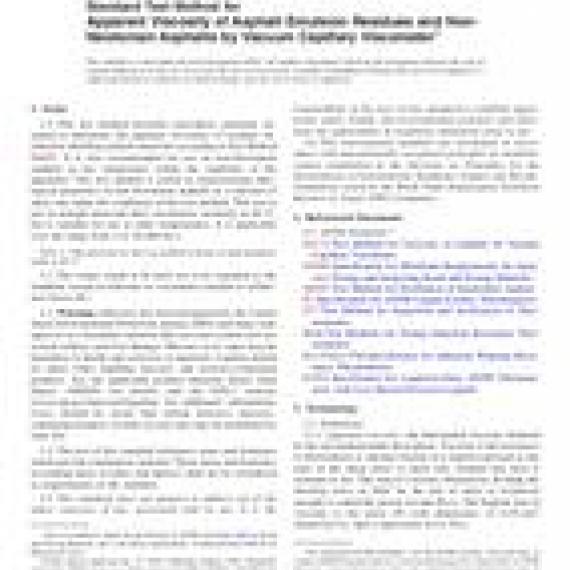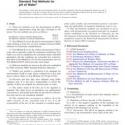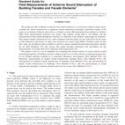No products
ASTM D4957-18
ASTM D4957-18 Standard Test Method for Apparent Viscosity of Asphalt Emulsion Residues and Non-Newtonian Asphalts by Vacuum Capillary Viscometer
standard by ASTM International, 01/15/2018
Full Description
1.1This test method describes procedures primarily designed to determine the apparent viscosities of residues obtained by distilling asphalt emulsions according to Test Method D6997. It is also recommended for use on non-Newtonian asphalts at any temperature within the capability of the apparatus. This test method is useful in characterizing rheological properties of non-Newtonian asphalts as a function of shear rate under the conditions of the test method. This test is run in straight open-end tube viscometers, normally at 60C, but is suitable for use at other temperatures. It is applicable over the range from 5 to 50 000 Pas.
Note 1:The precision for this test method is based on determinations made at 60C.
1.2The values stated in SI units are to be regarded as the standard, except in reference to viscometer constant or calibration factor (K).
1.3Warning- Mercury has been designated by the United States Environmental Protection Agency (EPA) and many state agencies as a hazardous material that can cause central nervous system, kidney, and liver damage. Mercury or its vapor may be hazardous to health and corrosive to materials. Caution should be taken when handling mercury and mercury-containing products. See the applicable product Material Safety Data Sheets (MSDS) for details and the EPAs website (www.epa.gov/mercury/faq.htm) for additional information. Users should be aware that selling mercury, mercury-containing products, or both, in your state may be prohibited by state law.
1.4The text of this standard references notes and footnotes which provide explanatory material. These notes and footnotes (excluding those in tables and figures) shall not be considered as requirements of the standard.
1.5This standard does not purport to address all of the safety concerns, if any, associated with its use. It is the responsibility of the user of this standard to establish appropriate safety, health, and environmental practices and determine the applicability of regulatory limitations prior to use.
1.6This international standard was developed in accordance with internationally recognized principles on standardization established in the Decision on Principles for the Development of International Standards, Guides and Recommendations issued by the World Trade Organization Technical Barriers to Trade (TBT) Committee.


































